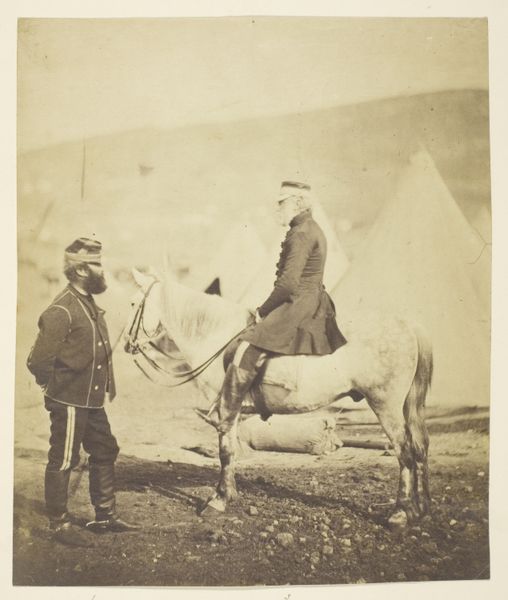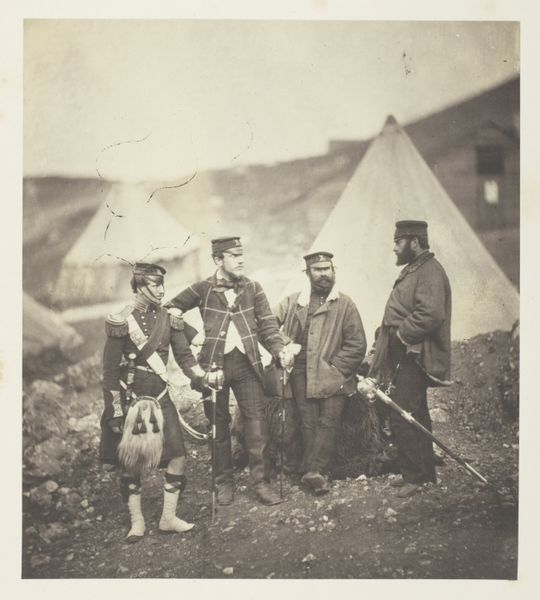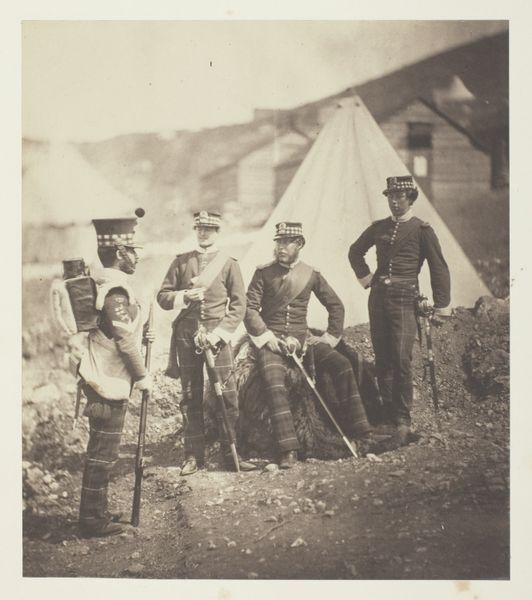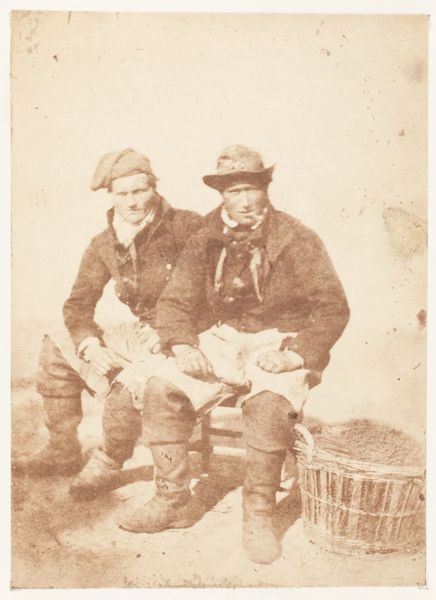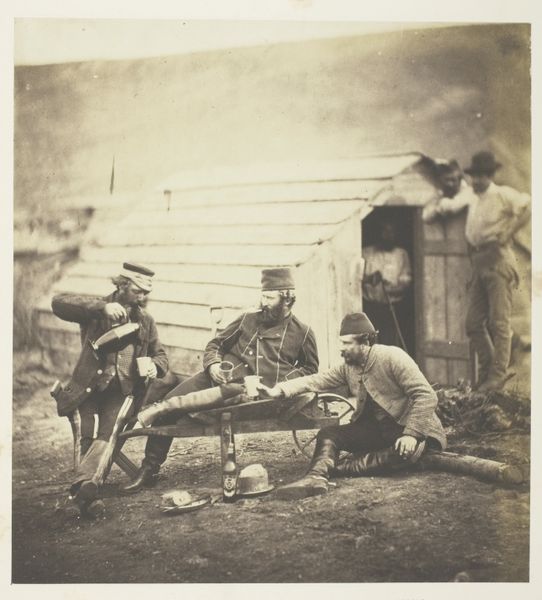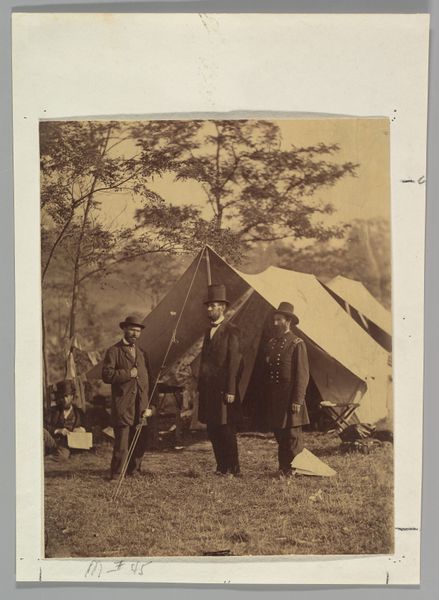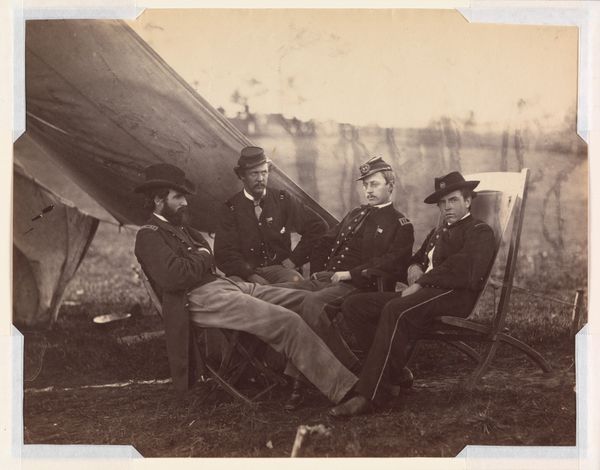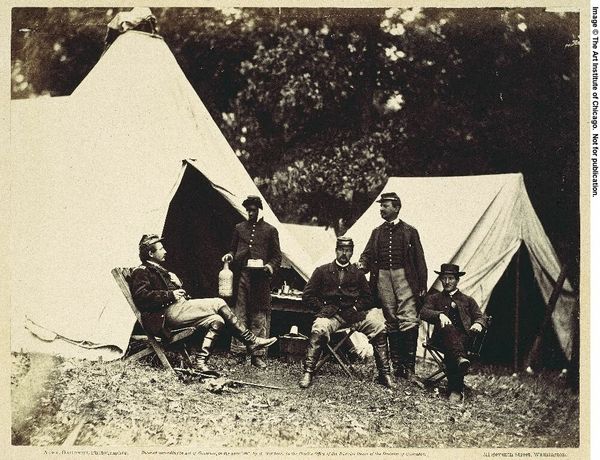
Captain Graham and Captain MacLeod, 42nd Regiment Possibly 1855 - 1856
0:00
0:00
Dimensions: image/sheet: 18.1 × 16.2 cm (7 1/8 × 6 3/8 in.) mount: 59.6 × 44.1 cm (23 7/16 × 17 3/8 in.)
Copyright: National Gallery of Art: CC0 1.0
Curator: Here we have Roger Fenton's "Captain Graham and Captain MacLeod, 42nd Regiment," likely taken between 1855 and 1856. It's a gelatin silver print capturing two officers in what seems to be a moment of posed, but relaxed, observation. Editor: There’s a starkness to it, even beyond the monochrome. It feels like a very formal snapshot but something in their stance makes me read tension under the surface. The lighting, the austere backdrop…it all contributes to a certain feeling of anticipation or foreboding. Curator: It’s fascinating how Fenton navigates the emerging photographic technology while simultaneously drawing from the visual language of portraiture and even history painting. Consider the socio-political context: this was during the Crimean War. Fenton was commissioned to document the conflict, and photographs like these were strategically used to manage public perception back home. Editor: So, the 'reality' it presents is, in effect, heavily curated? We see these stoic, arguably romanticized figures of power, and it conveniently leaves out the gritty reality and political morass of the war itself. Who is present and not present in these images is revealing of whose narratives matter. Curator: Exactly. Fenton’s photographs served a crucial function in shaping public sentiment and were considered vital propaganda for supporting war efforts. Looking at the details – the impeccable uniforms, the proud posture, even the placement within the camp setting – contributes to a narrative of strength and authority. These aren’t just portraits; they're visual tools carefully constructed to serve a specific agenda. Editor: I can’t help but look at these photographs today and feel the weight of what wasn't shown: the rampant disease, the mismanagement, the profound trauma. The officers themselves, these men, became symbols, but symbols abstracted from the real costs of conflict. I question whether that dynamic between visibility, erasure and constructed narrative has fundamentally changed. Curator: Fenton's work exemplifies the complex relationship between art, war, and politics. His strategic presentation played a significant role in the perception, at least in England, of the Crimean War, contributing to how war could be publicly visualized and politically defended. Editor: And recognizing that inherent subjectivity within images is so essential, as is questioning whose realities we see reflected and valorized even today, ensuring that dominant narratives do not overshadow the stories we desperately need to center.
Comments
No comments
Be the first to comment and join the conversation on the ultimate creative platform.
